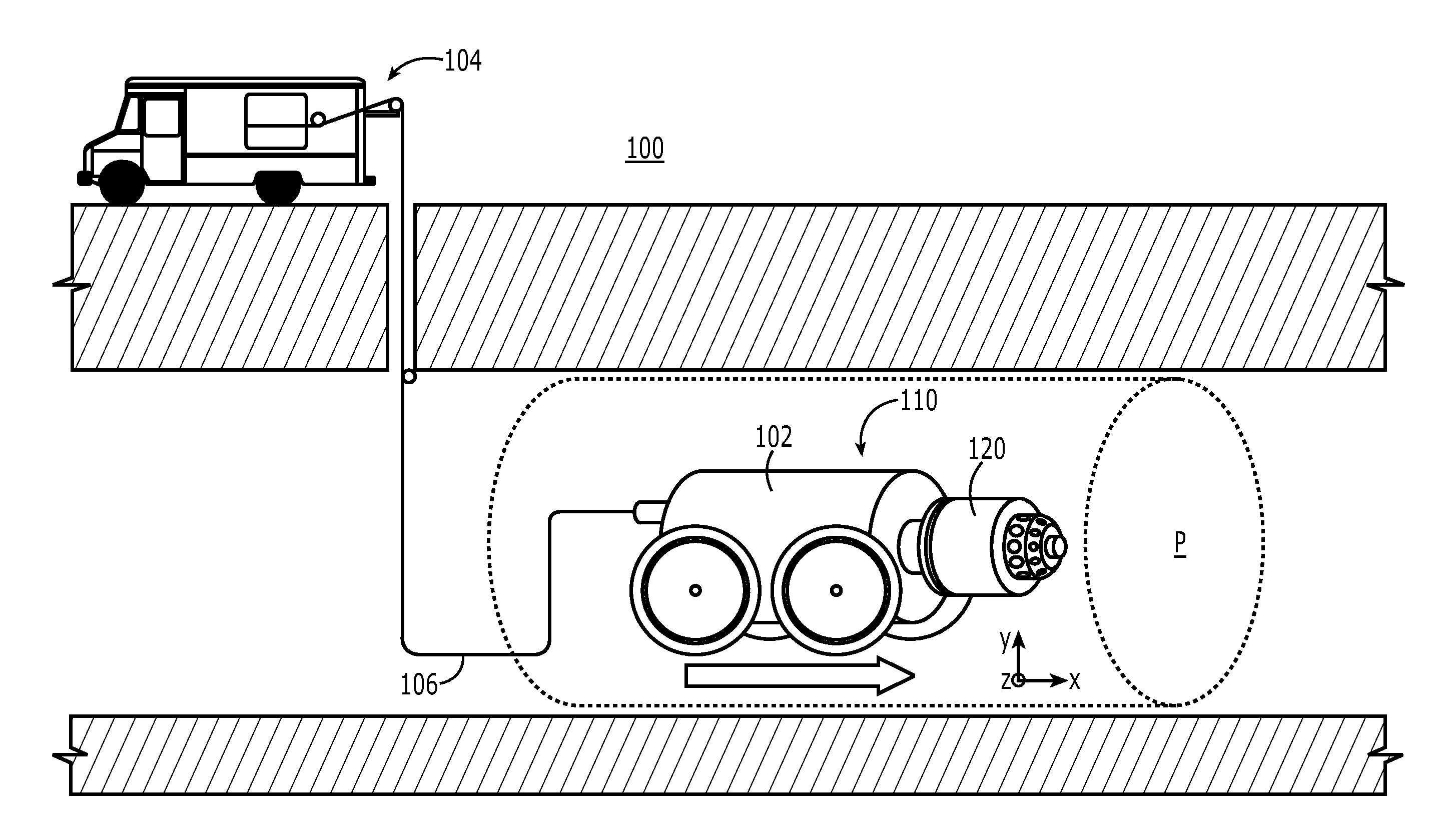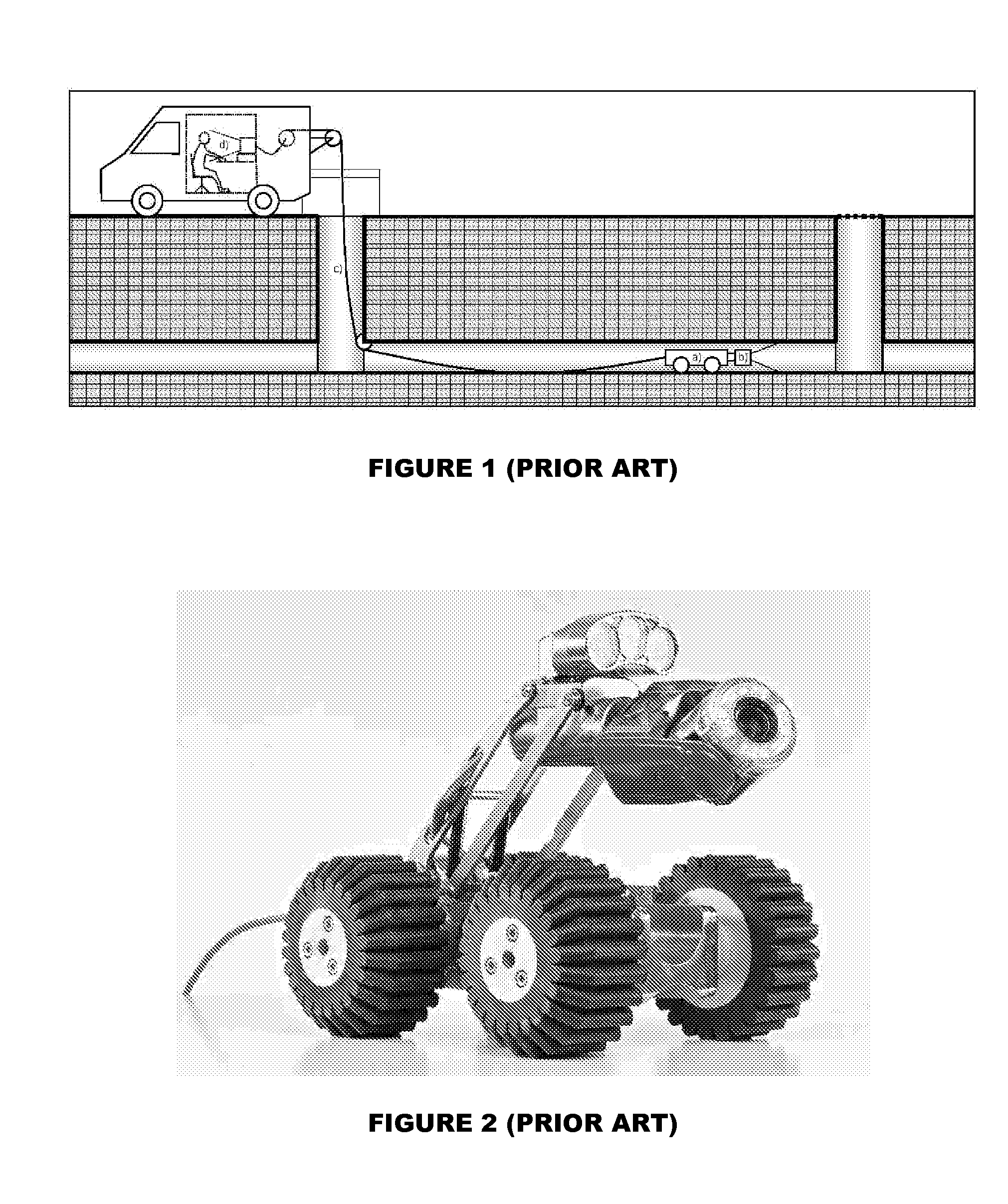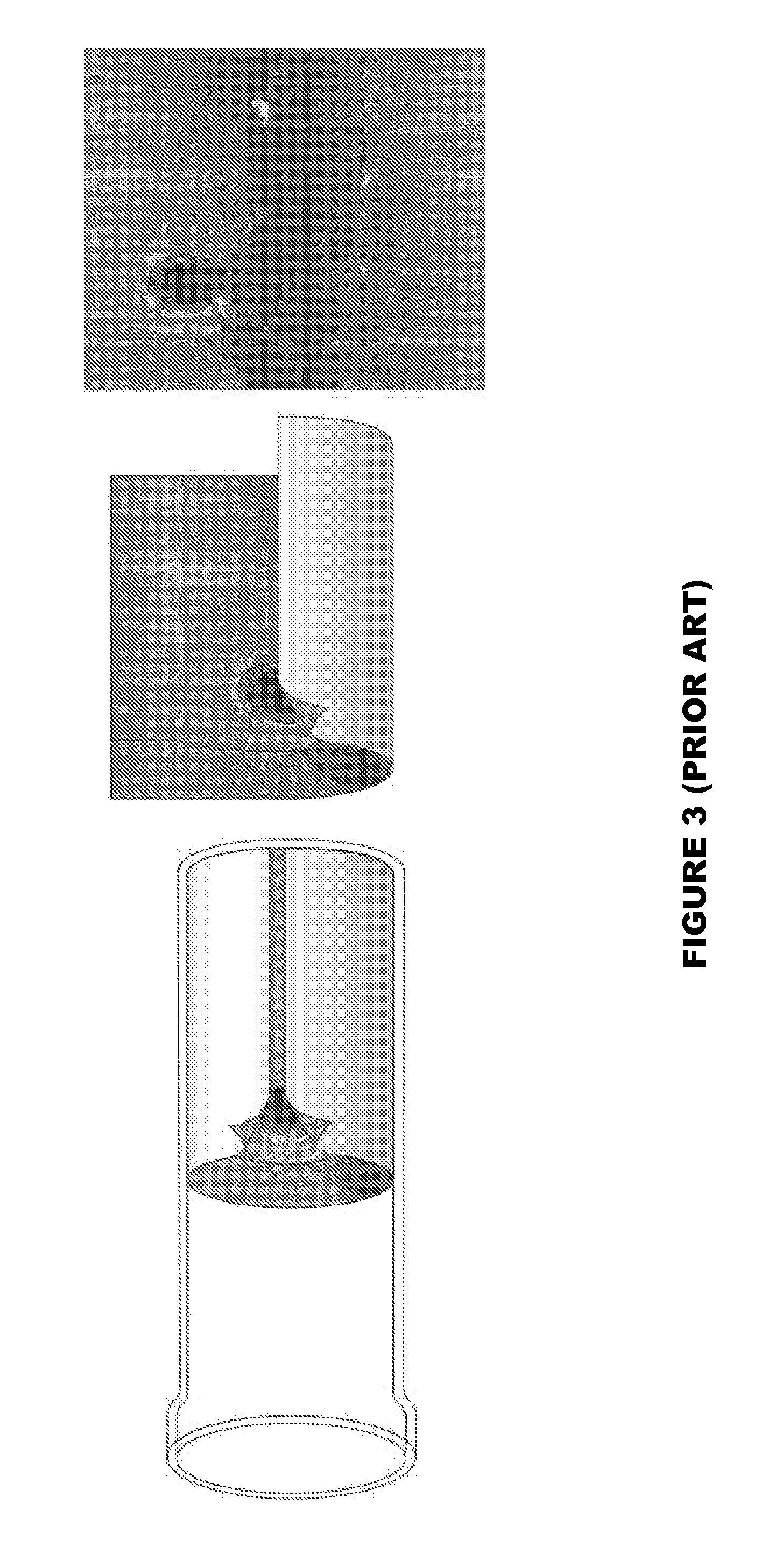Camera-based pipeline inspection system
a pipeline inspection and camera head technology, applied in the field of camera-based pipeline inspection systems, can solve the problems of low image quality, inconvenient two-axis pan-and-tilt system, high cost of building a suitable water- and explosion-proof camera head, etc., and achieve the effect of low cos
- Summary
- Abstract
- Description
- Claims
- Application Information
AI Technical Summary
Benefits of technology
Problems solved by technology
Method used
Image
Examples
Embodiment Construction
[0035]The present invention relates to camera-based inspection apparatuses and methods for inspecting the interior surface of conduits, pipes, ducts, pipelines and other similar structures (collectively, “pipelines”) commonly used for transporting storm or sanitary sewage, air, liquids, gases, slurries and the like. In particular, the present invention provides a novel camera head that implements novel imaging technology, yet is compatible with many of the conventional camera-based pipeline inspection systems that are presently in use in the industry. Thus, the camera head is advantageous in that permits an operator having a conventional analog-based video inspection system including an analog-video-based inspection vehicle, and analog-video-based operator station and an analog video-based control cable to improve its imaging for inspection purposes by simply substituting the digital-image-based camera head of the present invention for the existing analog-image-based camera head of ...
PUM
 Login to View More
Login to View More Abstract
Description
Claims
Application Information
 Login to View More
Login to View More - R&D
- Intellectual Property
- Life Sciences
- Materials
- Tech Scout
- Unparalleled Data Quality
- Higher Quality Content
- 60% Fewer Hallucinations
Browse by: Latest US Patents, China's latest patents, Technical Efficacy Thesaurus, Application Domain, Technology Topic, Popular Technical Reports.
© 2025 PatSnap. All rights reserved.Legal|Privacy policy|Modern Slavery Act Transparency Statement|Sitemap|About US| Contact US: help@patsnap.com



